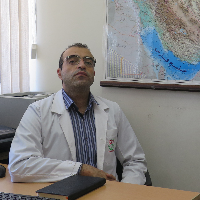Distribution patterns, diversity and conservation priorities of Onosma L. (Boraginaceae Juss.) in some sections of the northwestern geomorphologic unit of Iran
Author(s):
Article Type:
Research/Original Article (دارای رتبه معتبر)
Abstract:
Introduction
With increasing rates of biodiversity loss in recent years, new conservation methods have emerged. For example, by identify areas with unique endemic species and the habitat of species with special values (e.g., medicinal or endangered species) or areas that are highly threatened, we can provide the most protection at a lower cost. In Iran, there are taxa that have conservation priority due to their high diversity and threats. The genus Onosma L. is classified as one of these priorities in Iran due to the ecological and medicinal importance and being the center of speciation and biodiversity. It is necessary to determine the patterns of distribution, endemism and conservation status of these species.
Material and methods
In this research, using a database prepared from previous field studies and herbarium data, geographical distribution points of the species in a georeference geomorphology map of Iran were made to grid cells with ArcGIS software with a resolution of 25 × 25 (20 × 20 km) UTM and then the diversity zones have been determined. Then, based on the variety of geomorphologic-climatic conditions, various stations were selected for evaluation. Field studies were performed at these stations based on elevation gradient. At each station, the quadrates were established based on the type of habitat and population characteristics of the species. At each station, between three and five quadrates were set up and in each quadrate the coverage, density, diversity and surface coverage of the target species were evaluated. Within each quadrate, three to five * Corresponding Author individuals were sampled. Then, from each quadrate, the soil samples were collected from the surface to the depth that the root is deployed. In addition, habitat features such as habitat physiognomy, threats, and other ecological features were noted. In addition, the collected samples were fixed and stored according to standard protocols. The identification of taxa was done based on Iranian flora, Iranica and flora of Iraq, Flora of Turkey, and the former Soviet Union. Assessing the threatened species was performed according to the Red List of Regional Guidelines for the Conservation Union, assessing the conservation status of the habitats was done in accordance with the guidelines of the World Conservation Union and the rare species were classified based on a combination of standard methods.
Results and discussion
In this study, the distribution patterns of nine species with 106 populations of Onosma was assessed using a geobotanical approach. Among the studied specimens, one species belonged to the subsect. Asterotricha., two species belonged to the subsect. Heterotricha, and six species belonged to the subsect. Haplotricha All in all, only four species were endemic of Iran. The elevation range of the studied species was 455 to 2950 AMSL, and species often occupy mountainous (1500 to 2500 meters) and mountain (900 to 1500 meters) habitats, which are in agreement with the results of previous studies. Most of the populations were distributed in mild, semi-sloping, southern slopes, and semi-humid, Mediterranean and semi-arid climates. The habitats with the average annual temperature of 0-10 °C, average annual rainfall of 200 to 500 mm, low soil depth and sedimentary, igneous, and volcanic-sedimentary geological structures had the most species richness. The species within this genus had the most species richness in the geographical coordinates of 37 to 38 °N latitude and 47 to 48 °E longitude, and the overall richness of species to the north shows a relative and gradual decrease. Also, O. sabalanica was the most threatened and O. microcarpa and O. elwendica were the least threatened, and O. sabalanica and O. subsericea are among the rare species of this genus in the region.
Conclusions
Rare species of Onosma often have small populations and are spread only in a limited geographic area and altitudes, which makes them vulnerable to threats. So, along with methods for protecting its species in the natural habitat, species-centric conservation and focusing on ex-situ conservation methods are also recommended.Keywords:
Language:
Persian
Published:
Environmental Sciences, Volume:17 Issue: 1, 2019
Pages:
73 to 94
magiran.com/p2006015
دانلود و مطالعه متن این مقاله با یکی از روشهای زیر امکان پذیر است:
اشتراک شخصی
با عضویت و پرداخت آنلاین حق اشتراک یکساله به مبلغ 1,390,000ريال میتوانید 70 عنوان مطلب دانلود کنید!
اشتراک سازمانی
به کتابخانه دانشگاه یا محل کار خود پیشنهاد کنید تا اشتراک سازمانی این پایگاه را برای دسترسی نامحدود همه کاربران به متن مطالب تهیه نمایند!
توجه!
- حق عضویت دریافتی صرف حمایت از نشریات عضو و نگهداری، تکمیل و توسعه مگیران میشود.
- پرداخت حق اشتراک و دانلود مقالات اجازه بازنشر آن در سایر رسانههای چاپی و دیجیتال را به کاربر نمیدهد.
In order to view content subscription is required
Personal subscription
Subscribe magiran.com for 70 € euros via PayPal and download 70 articles during a year.
Organization subscription
Please contact us to subscribe your university or library for unlimited access!


